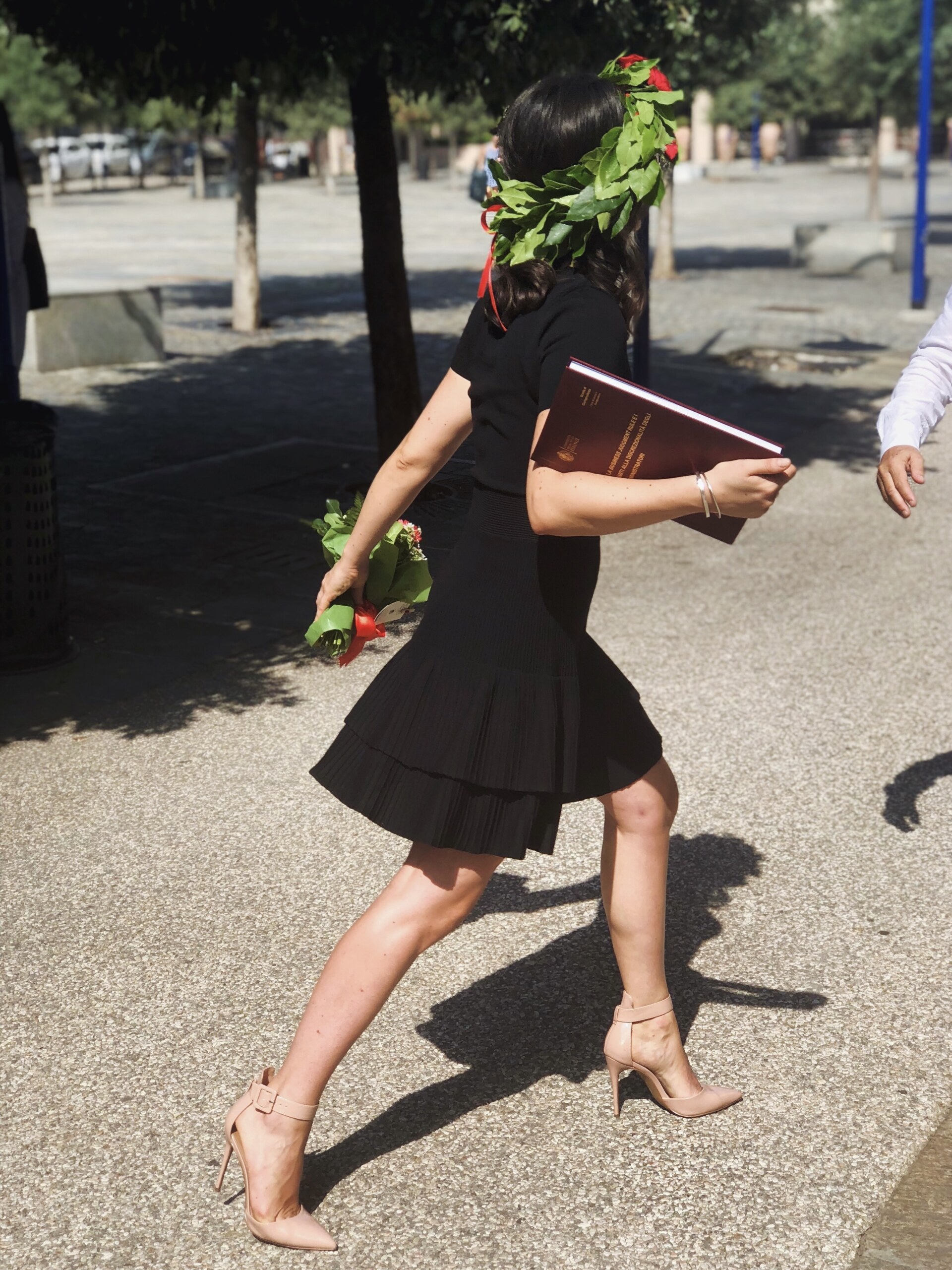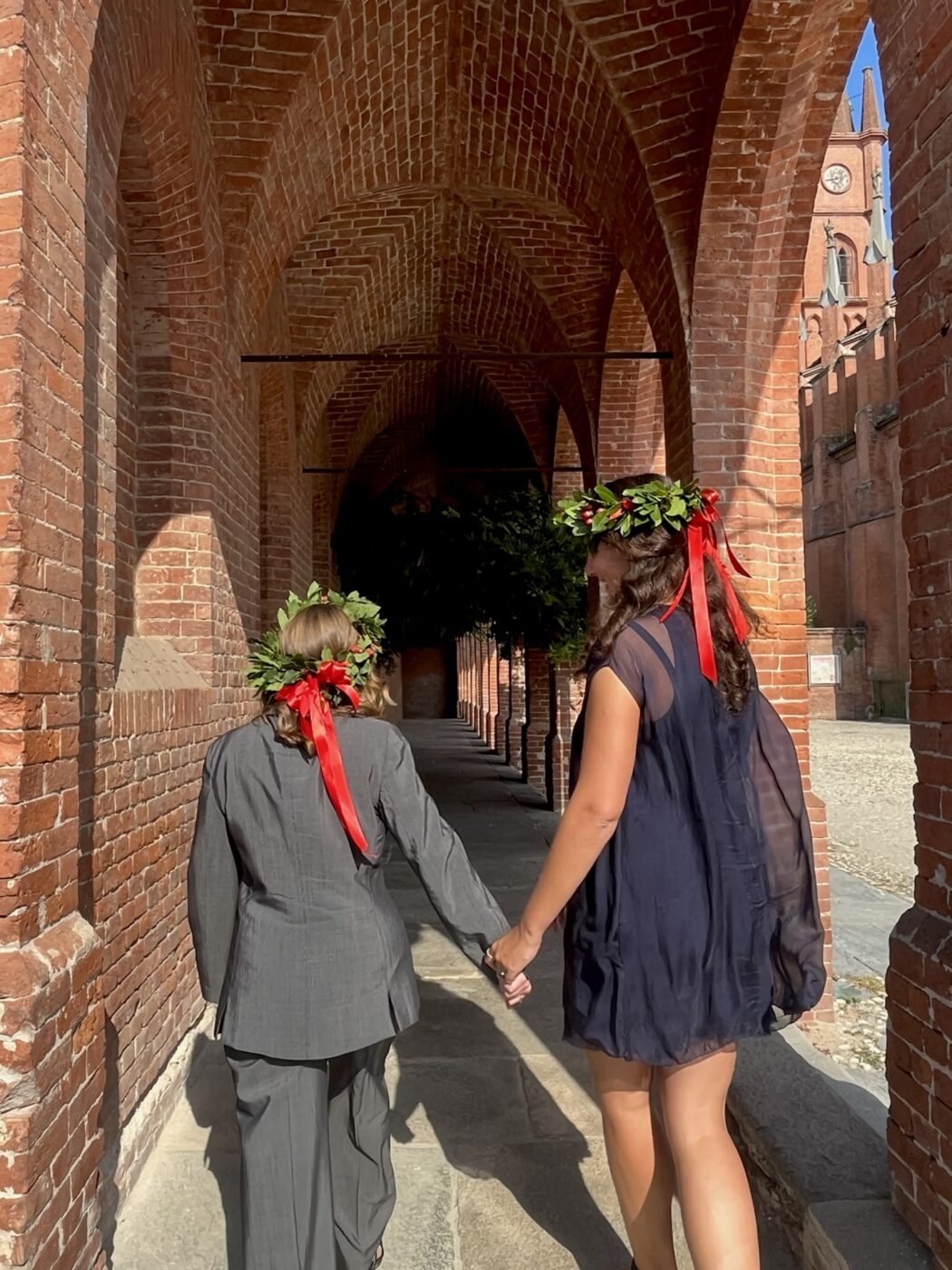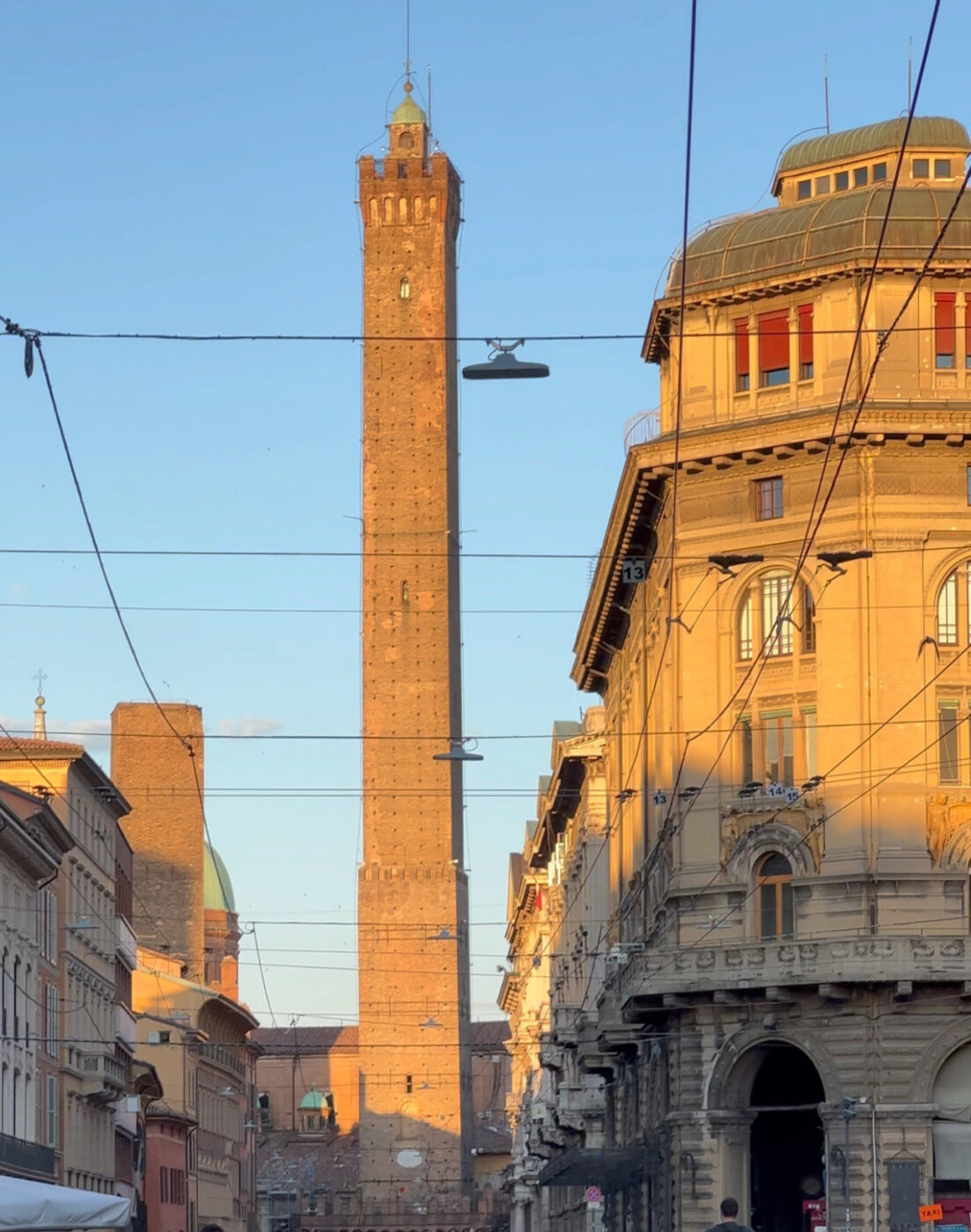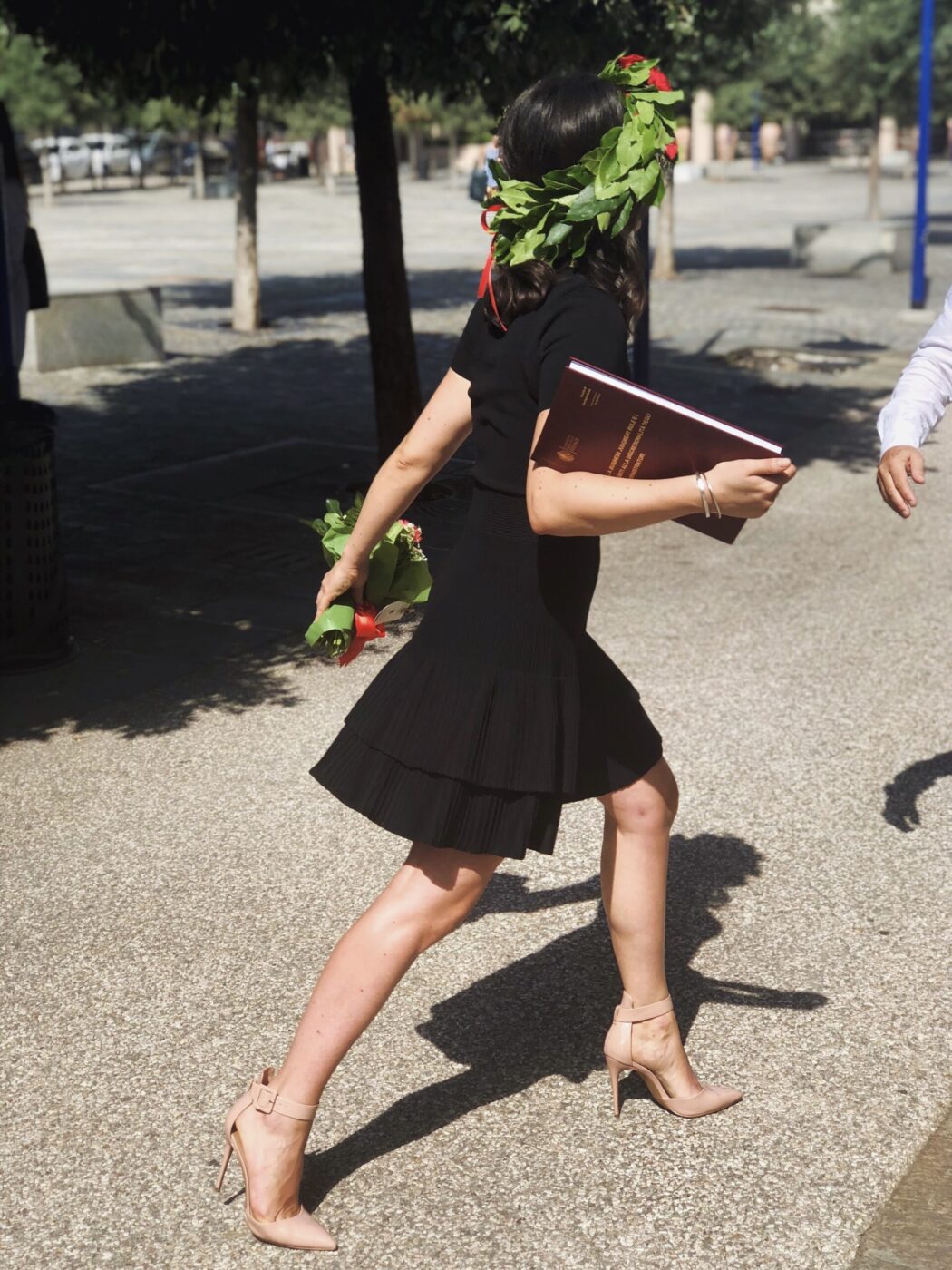In Rome’s Policlinico, the student district where I lived for a short while, you could sometimes not move for the new graduates. I would see them: their laurel leaf crowns bobbing merrily amidst café dwellers and commuters. Friends and family had the tendency to throng the pavement in sequential clusters, leaving pedestrians with the uncomfortable choice between intruding on the intimate celebrations or taking on the treachery of the Roman roads. When those crowds dissipated, part of them stayed behind: sugared almonds littering the floor, scarlet confetti. Women donned power suits, in every vivid shade imaginable, flocking to the bars for an evening of technicolor spritzing. Men would sport mirrored sunglasses and a nonchalance that seemed to suggest every day involved such loud and leafy exuberance. I would hear them too: the celebratory chant: “dottore, dottore, dottore” sounding at frequent intervals from street corners, a siren call to housebound students wading through revision.
You may well have seen these scholastic festivities for yourself; in Italy, graduation happens in sessions throughout the year, and so you might stumble across “neo laureati” (the newly graduated) roaming the streets at any given time. Here in Italy, a graduate is termed a “laureato”, meaning “crowned with laurel”, and subsequently given the title of “dottore” (doctor), from which arises the ubiquitous chant. “La coroncina di Laurea”, or the laurel wreath, dates back to Ancient Greece, when the laurel plant was sacred to Apollo, Greek god of intellect; myth has it that, after the god’s beloved nymph Daphne was transformed into a laurel tree to escape his pursuit, Apollo vowed to cherish her even in this new form. He named the laurel’s branches blessed, making the wreaths woven from them symbols of wisdom and victory worn by emperors and generals alike. The donning of the laurel wreath is one of the oldest traditions in academic history.
Graduating in Italy is a notoriously difficult activity, and getting there takes some time. While the average age of graduation for university students in the EU sits between 22 and 24, in Italy, students typically graduate around 25. The flexible structure of the university system means that courses are often extended to accommodate part-time work, and as exams for a single course are offered between 5 and 10 times a year, students frequently choose to reject marks they don’t like and sit the exam again in hope of the desirable 30/30–full marks. Both because the exams are hard, usually oral, and taken in front of the whole class, and because they can be re-sat as many times as you like, failing is extremely common. Students are expected to memorize everything down to the footnotes of weighty tomes, and often chance exams as a “trial run”, while professors are famed for pedantry. In fact, Italy ranks amongst the third-lowest rate of academic degree holders in the European Union, with fewer than 20% of Italians holding a bachelor’s degree in 2023, compared to the EU average of 30%.
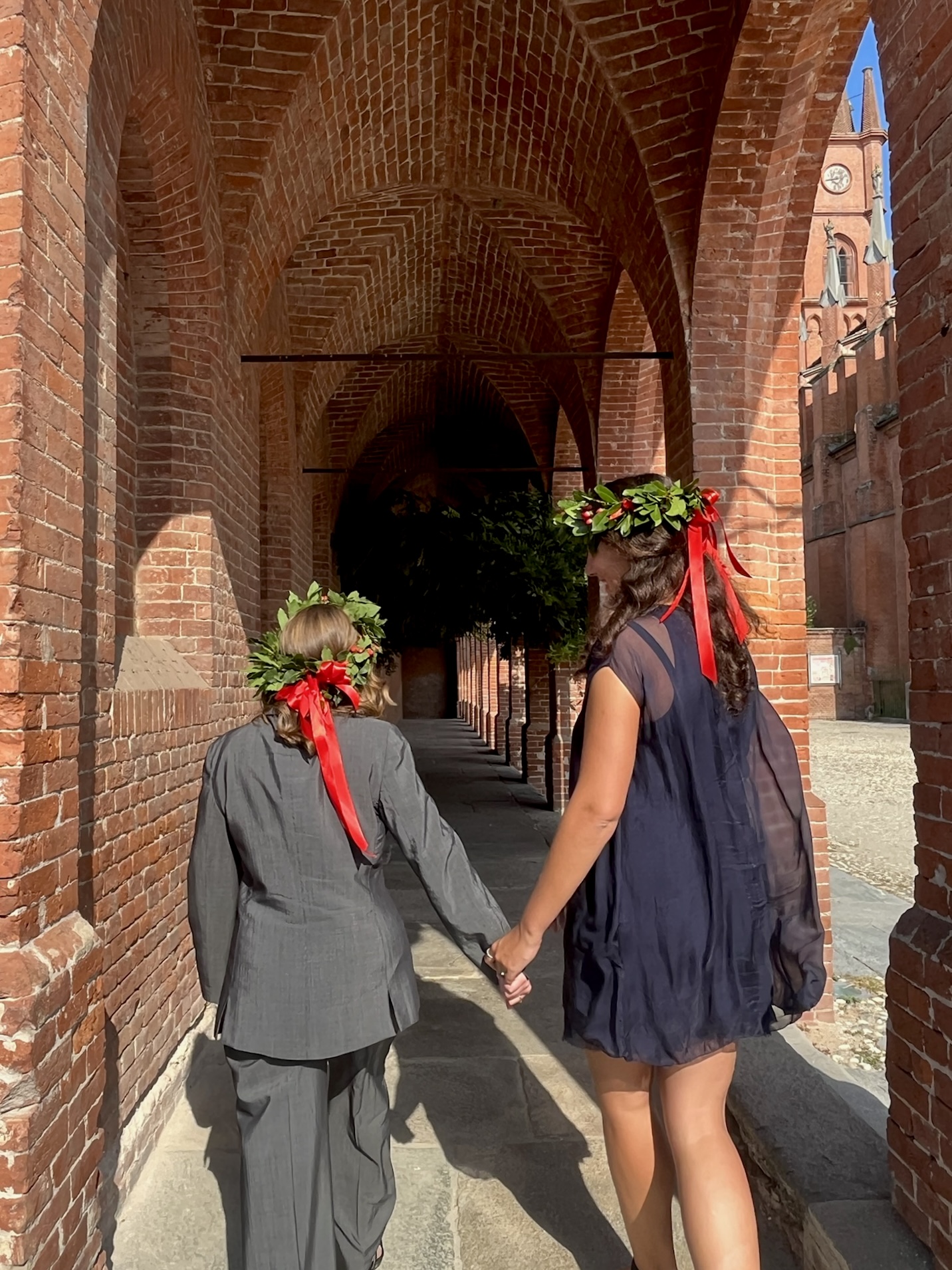
Graduating, then, is a starry achievement. Claudia, who studies architecture at the Politecnico di Milano, tells me that students are donned with their laurel leaf crown after they have presented their thesis and received a final grade from their professors. The “corona” is not given to students by the university, but bought on an informal basis by the students themselves or by the family and friends who are typically in attendance. Tradition dictates that the last member of the party to arrive will be the one to crown the new graduate. Some say that you must pluck a laurel leaf from the crown when at a friend’s graduation, others say that the leaf must be torn off and handed to you by the graduate themself; the smaller the leaf, the shorter the time before you become a graduate yourself.
The crown has become something of a statement. Claudia explains that there is a growing trend of customizing the laurel wreath to your liking, as the tradition evolves in its own right. Some people add flowers, others a ribbon, its color based on the faculty in which you studied or on the graduate’s own preference. Celebrants bring bags of “coriandoli”, sugared almonds or confetti in hues of crimson, as red is the symbolic color of the laurea. The festivities extend beyond the joyful reception of those nearest and dearest; while it’s tradition to have a dinner party with your family and close friends, Claudia tells me, some have parties “as big as a small wedding.”
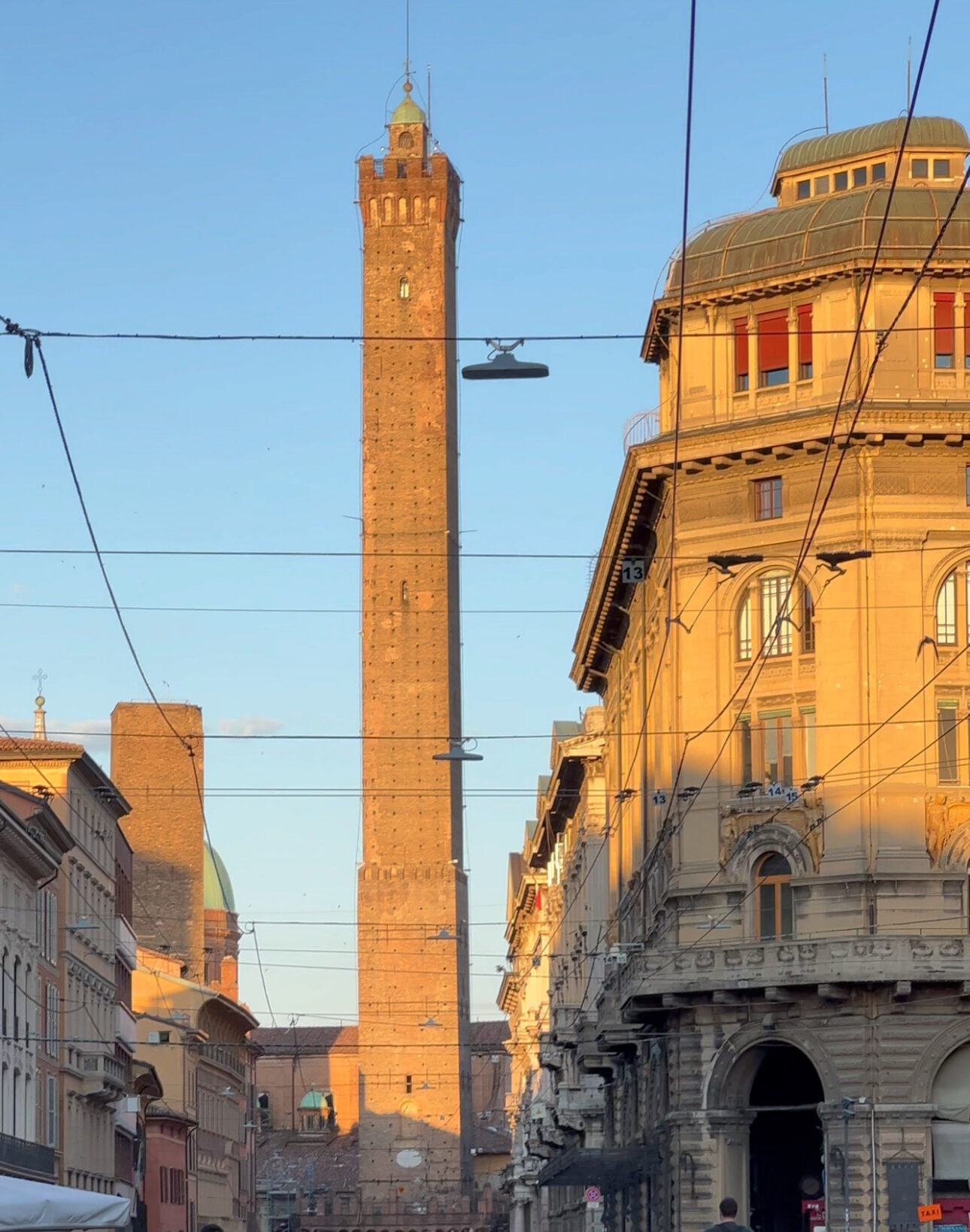
“Everyone climbs it after they have graduated.” – Asinelli tower in Bologna
Old superstitions remain to remind students of the precariousness of their fate. Lucrezia, who studied at the Università di Bologna, tells me that legend has it students cannot climb the city’s famous Asinelli tower, or they will fail to graduate. “Everyone climbs it after they have graduated.” She says. “I waited four years to go up it. Somehow it made it so much more special to have waited all that time to see the view from the top.”
Similar superstition exists at La Sapienza in Rome, where it is said that any student who dares to look into the eyes of the statue of Minerva, which stands proud outside the humanities faculties, will not graduate. In Naples, students of Medicine are not allowed to visit the Cristo Velato in the Chapel of San Severo; in Pisa, they cannot climb the tower of Pisa, or even walk around it, and in Milan, tradition dictates they should not climb the stairs of the Duomo. Custom extends beyond the superstitious: in Padua, flour and eggs are thrown over new graduates.
“It’s a big tradition in Italy for friends to try and humiliate the person who is graduating,” Lucrezia says. “Making them dress up, or pull weird stunts. It’s light-hearted; almost everyone does it.”

Despite this, “I never really liked that element of the celebration,” she confesses. “It just felt like such an important day, and I decided to spend it with my family instead. Looking back now, though, I kind of wish I had done it, as it’s such a big part of the tradition.”
These are light-hearted customs, but becoming a laureato carries an academic and cultural significance that remains meaningful. Isabella, who studied in England and graduated from the University of Cambridge this summer, decided to incorporate her Italian heritage into a very English ceremony, and donned a laurel leaf crown with her graduation gown.
“I wanted to bring over a piece of my own Italian culture,” she tells me. “It was a way for me, even though I was far from home, to have this new experience with my Italian heritage and a moment of cultural connection with my Italian side.”
She was slightly self-conscious, she says, to stand out with a custom that most English students had not seen before. But “that was part of what made it special: other Italians graduating would know what it was, and understand what it meant, even if nobody else did.”
A tradition, then, that when practiced over foreign seas is stripped of any associated frivolity to reveal a solemn symbolism that lies beneath; one that does not just mark the completion of studies, but also reflects national identity. “The gown represented Cambridge and that Anglo side of me,” Isabella says. “The crown represented Italy.”
